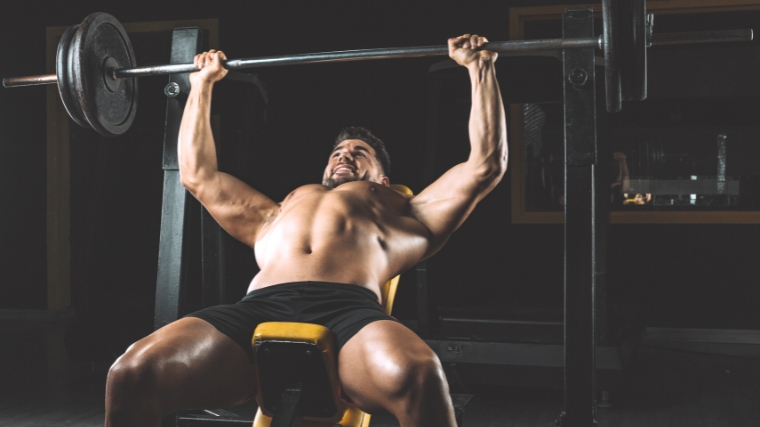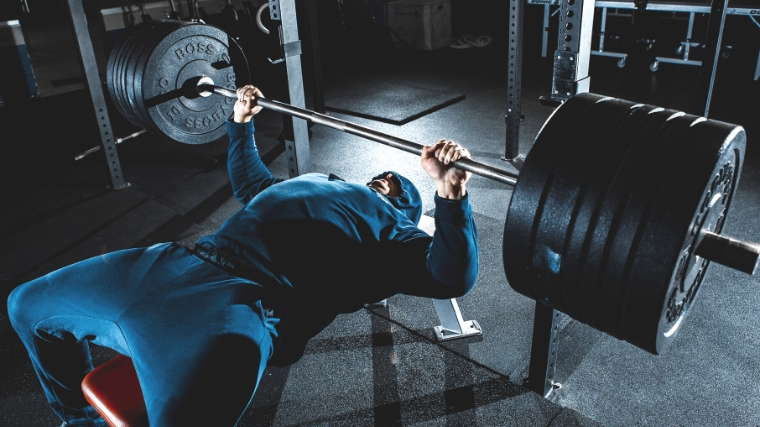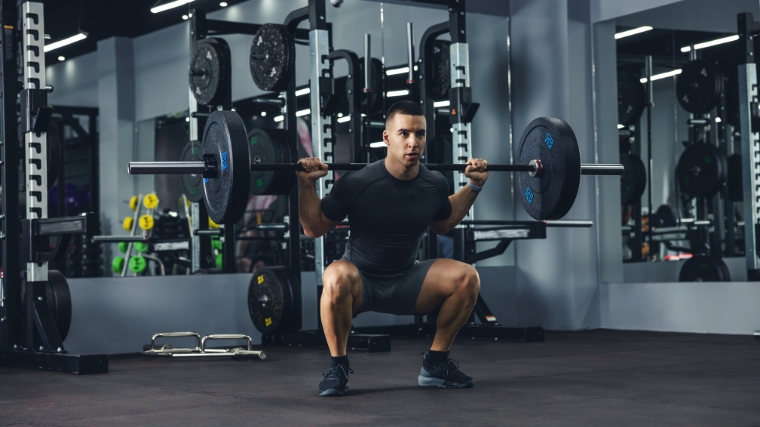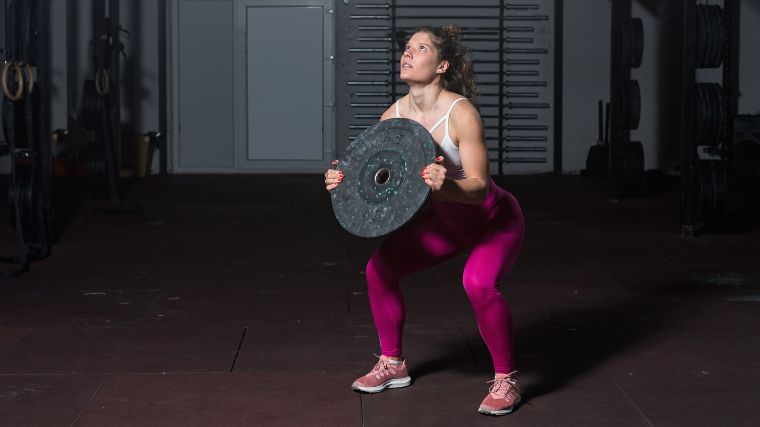Powerlifting is a seriously rewarding sport. As a strength athlete, you’ll learn to grow stronger and stronger over time. But if you’ve hit a plateau and you’re starting to wonder where it all went wrong — or if you want to figure out how to lift even heavier — you might be wondering how you can become a better powerlifter.
As you progress in this sport, you learn about your mistakes and often wonder how much stronger you would be if you did not. When you’re first starting out, those mistakes might be obvious. And if you are more experienced, it is not too late to audit your own approach to your training.
In this article, you’ll learn to take a look at your powerlifting program and figure out what’s going wrong — and how to make it right. Here are some of the most common powerlifting mistakes and how to fix them — both in the gym and outside of it.
8 Common Powerlifting Mistakes
- Neglecting Hypertrophy
- Lifting Too Heavy
- Not Allowing Yourself to Gain Weight
- Gaining Unintentional Body Fat
- Specializing Too Fast
- Neglecting Core Training
- Momentum on the Bench Press
- Not Pulling the Slack Out of the Bar
Editor’s Note: The content on BarBend is meant to be informative in nature, but it should not be taken as medical advice. When starting a new training regimen and/or diet, it is always a good idea to consult with a trusted medical professional. We are not a medical resource. The opinions and articles on this site are not intended for use as diagnosis, prevention, and/or treatment of health problems. They are not substitutes for consulting a qualified medical professional.
Neglecting Hypertrophy
A large part of powerlifting is prioritizing the main three lifts — the squat, bench press, and deadlift. The principle of specificity in sports suggests that athletes adapt to whatever they do in training. To be good at squats, bench presses, and deadlifts, you need to do more squats, bench presses, and deadlifts.
This makes sense and is definitely a key component of training for powerlifters. But it’s not the whole story. Especially when you’re not just before a competition, bodybuilding-style training focused on building muscle outside the big three can help you get a lot stronger.
Why It Matters
Bodybuilding training involves selecting exercises to grow individual muscle groups more effectively. Higher levels of muscle mass can lead to a higher potential for strength performance in the long term.
Building certain muscle groups can support the prime movers of your big three. You can target your chest, quads, hamstrings, and glutes for hypertrophy if you want to help your body handle those intense movements.
It is also important to include bodybuilding exercises to target the stabilizer muscles for your big three. Stabilizer muscles may include your back, shoulders, triceps, and core muscles. These stabilizer muscles enable you to be able to tolerate load and manage your balance during the execution of the big three movements.
Specific hypertrophy training can help bring up any weak points in your training. For example, if you’re struggling with the bench press lockout, the problem may lie with inadequate triceps strength. Targeting your triceps with bodybuilding-style exercises can help improve your lockout and give you bigger numbers on the bench.
By doing more bodybuilding exercises, you can also potentially reduce your risk of injuries. Doing bodybuilding exercises can help by increasing the work capacity of the muscle groups. This can help you bring up your weaknesses to help you avoid potential overuse injuries or strains from pushing your smaller, overlooked muscle groups too hard and too fast.
How to Fix It
You can fix this problem by ensuring that you’re targeting all muscle groups at least once during a training week. If you find that there is a muscle group that you’re not training directly, you can swap or add in one suitable exercise with the following protocol:
- Perform three sets of 8 to 12 reps
- Leave three to four repetitions in reserve*
Repetitions in reserve, or RIR, refers to how many reps you have left in the tank at the end of a set. If you think you could do three more overhead presses before mechanical failure, you have three RIR.
Lifting Too Heavy
If you lift too lightly on the squat, bench press, and deadlift, you hold yourself back from getting stronger. Lifting too light may mean habitually lifting too low of a percentage of your one-rep max (1RM) or not coming close enough to failure to stimulate growth and adaptation.
To get stronger, you’re going to need to lift weights at a high percentage of your 1RM. You’re going to have to get proximity to failure when you’re program calls for it. This will help you activate the muscle fibers responsible for most of your strength gains. You’re also making the neurological adaptations you need to get stronger.
That said, it’s tempting to take these important training principles too far. It is possible to push too close to failure and lift too intensely.
Why It Matters
There are consequences of pushing the main three lifts too close to failure. When you consistently push too hard, you bring about higher levels of immediate and long-term fatigue. This impairs your ability to do more meaningful training later on in the session. You might feel better about that one set, but what about all those after it?
Going too hard too often also limits how much and hard you can train in subsequent training sessions and weeks. This can have a negative impact on how much effective training you can do long-term that will lead you to optimal gains.
Training too close to failure may also bring about technique breakdown. Your technique is more likely to disintegrate when your fatigue comes through in your execution. The problem with technique breakdown is that you reinforce poor techniques.
If you’re out there every day grinding so hard your technique breaks down in each set, it’s more likely that your technique will fail you when it matters most. This can result in a missed lift in competition, an injury, or both.
How to Fix It
You can fix this by making sure that for most training sets, there are at least four or more repetitions left in the tank before failure. That doesn’t mean you won’t go hard — you will — but there are more ways to get to higher intensities than just slapping on more plates.
You can also monitor your training with video recording so that you can assess the quality of your technique. If you find that you are training with a breakdown of your technique, you may want to train with lighter loads until your technique improves.
Not Allowing Yourself to Gain Weight
A common mistake that a lot of newer and younger powerlifters make is that they attach themselves to the weight class that they compete in. They often find themselves wanting to get stronger in the weight class that they start off with. The problem with this is that they artificially stop themselves from being able to gain weight organically and get stronger — even if that’s in a new weight class.
Limiting yourself to a certain weight class may be a successful strategy when you’re close to the top of the sport. But unless you’re at a very elite level, you may want to consider other strategies.
Why It Matters
Allowing yourself to gain weight may be important for you to increase your muscle mass. That muscle mass can in turn boost your potential to develop strength and your overall performance. This will often actually increase your competitiveness as a powerlifter in the long run.
By allowing yourself to build muscle and gain weight, while having a stable body fat percentage, you can potentially increase your relative strength pound for pound. Being less stringent about weight gain may also help prevent lifters from operating in a “cutting weight” mindset full-time, which may diminish strength gains.
How to Fix It
To fix this, consider monitoring your body composition in relation to your strength performance. Lifters might be tempted to only look at the number on the scale instead of the bigger picture.
If your body fat levels are staying relatively constant but you still find yourself plateauing in your performance and needing to cut weight for competition, you may want to allow yourself to gain weight and compete in the weight class above. Otherwise, you may risk eating into muscle growth and your strength development.
Gaining Unintentional Body Fat
Gaining weight long-term is important for many powerlifters, as this puts you in an environment to be able to pack on muscle as you get stronger pound-for-pound. However, there is a limit to how fast you should gain weight. If you eat too much of a calorie surplus too fast, you may be increasing your overall body fat percentage.
Why It Matters
Like gaining muscle, gaining body fat changes the physical proportions of your body. And gaining a lot of body fat (especially rapidly) can be a problem for some powerlifters. A high body fat percentage can physically affect your body’s structure for lifting. This is often referred to as your body’s leverages.
Take the deadlift, for example. With too much body fat, you may find that you need to stand wider than usual to grab onto the bar, which can increase your range of motion for the exercise. Increasing your range of motion can increase the demand from you overall, leading to having to work harder to pull the same amount of weight.
If you are gaining body fat very quickly, your muscles may not have a chance to catch up with the increased range of motion demands. This can put you in a precarious position.
How to Fix It
Powerlifters generally don’t monitor body fat percentages as closely as bodybuilders do. But if you want to keep track of how your body fat levels interact with your performance on the platform, you may want to periodically check in with yourself via body measurements or pictures of yourself.
[Read More: The Most Effective Workout Splits, Created by Our Experts]
For powerlifters who may have a history of disordered eating and body image issues, tracking body fat may not be an option. In that case, paying attention to your general nutritional habits can help fuel stronger workouts and lifts. If you find that on days and weeks that you’re eating certain foods helps you perform better, consider adding more of them to your meals.
Specializing Too Fast
In the context of powerlifting, exercise specificity refers to how closely related your exercises are to your competition lifts. Too much exercise specificity too soon refers to emphasizing the squat, bench, and deadlift exclusively too early in your powerlifting journey.
[Read More: The Best Upper Body Exercises and Workouts]
Having too much exercise specificity too soon may have negative implications for you as an athlete. You’re more likely to plateau prematurely if your training isn’t well-rounded early on. It’s also more likely that you’ll develop muscle and strength imbalances that can mess up your performance at best and increase your injury risk at worst.
Why It Matters
Too much exercise specificity can lead to overuse injuries and mental burnout. You may also develop preventable weaknesses and imbalances.
Training super heavy with the same three lifts all the time can cause muscle strains or other overuse injuries. Especially if there is any flaw in your movement patterns, you risk — for example — a shoulder strain on the bench press or an inner groin strain with your squats.
If you want to have longevity in powerlifting, you need to reduce the chances of emotional burnout where you may get bored. By having too much exercise specificity too soon, you may find the repetitiveness overwhelming. You’ll potentially risk losing interest in the sport overall.
If you are only doing the competition lifts, you also risk exacerbating or developing weaknesses in your overall performance. For example, if your triceps only get worked through bench pressing, you’re likely to plateau prematurely. At some point, your triceps will give out and you won’t be able to lock out the bar.
Similarly, adding different types of compound lifts to the mix will help prevent imbalances and plateaus. If you’re a naturally hip-dominant squatter, your quads might wind up being a weak link. By incorporating front squats into your routine, you stand to improve your back squats tremendously.
How to Fix It
To fix this, you may want to consider choosing slightly different variations of the squat, bench press, and deadlift that help reinforce good technique and target your weaknesses. Good examples of variations may include altering the speed and pausing of the competition lift, or choosing different grips and stances.
Here, you’ll find some examples of what exercises you may want to swap in once a week and training techniques to incorporate into your training cycles.
- Front Squat
- High Bar Squat
- Sumo Deadlift
- Trap Bar Deadlift
- Incline Bench Press
- Decline Bench Press
- 1 ½ rep training
- Pause rep training
- Tempo training
Neglecting Core Training
One common fact that gets thrown around a lot in the fitness industry is the fact that the squat and deadlift also activate your core muscles. While this is true, it is a myth that powerlifters never need to train their core specifically.
Even when powerlifters do train their core, it’s often an afterthought left to the end of training sessions. Because of this, core and postural exercises are often neglected.
Why It Matters
When any exercise gets left to the end of a training session, the effort and attention that is left for these exercises is minimal. Long term, this may result in your core muscles being under trained. If these core muscles get undertrained, they may end up being a weakness for the execution of your big three.
Your core muscles — which includes muscles from around your hips to your mid back — are important for controlling your posture in your main lifts. Being able to manage your posture is important for being able to deal with large loads safely and effectively.
Ultimately, your core makes the force transfer from your legs to the barbell more efficient. You need the middle part of your body to be as rigid as possible. Without strengthening this potentially weak link, you risk plateauing and suffering from form breakdowns under heavy load.
How to Fix It
To fix this, you may want to consider programming in core exercises earlier in your session (right after your big lifts). You can add core training to a separate day, or simply dedicate more time and attention to your core routine. Treat your core exercises as though they’re just as important as your other accessory moves — because they are.
Here are some core exercises for powerlifters you might want to consider adding to your routine.
Momentum on the Bench Press
In a competition, the execution of the bench press includes a momentary pause of the barbell on your chest. A press command is given when the referee can see that the barbell is paused motionless on the chest. Most times, the pause is often about one second, but this can vary from attempt to attempt.
For this reason, the bench press should be paused on the chest when training. But a common mistake is that people do not pause long enough when practicing.
Why It Matters
When training the bench press, if you do not pause on the chest, you do not strengthen that portion of the range of motion. Further, when you train with an insufficient pause on your chest, you may over predict what you can actually perform in competition. If you can bench three plates only by bouncing the bar off your chest, it just won’t count in competition.
Another common problem is that many powerlifters do not anticipate how long they may actually be pausing and holding the barbell at the top of the bench press before initiating the descent. In competition, when you unrack and set up, the side referees need to give the center referee the signal to initiate the start command. It takes a bit of time for the side referees to judge whether you are fully set with your feet flat and hips down on the bench.
How to Fix It
Incorporate bench press variations that involve a longer pause on your chest. Make sure you’re really holding it — consider using slow two-count or three-count pauses.
Techniques like tempo training and using 1 ½ reps might also help improve your technique and strength with increased time under tension. The more comfortable you are putting your muscles under tension for a longer period, the more likely you are to be successful on the competition platform.
You may also incorporate Larsen presses as a bench press variation if you are someone who is weak at the bottom of the bench press.
[Read More: How to Do the Dumbbell Bench Press]
Not Pulling the Slack Out of the Bar
Pulling the slack out of the barbell is often a component of good deadlift technique that beginners and some intermediates don’t use. This is because they are often not lifting a weight where much slack can be pulled out of the barbell or they are not developed enough to be able to learn this technique.
Certainly, as you get stronger on the deadlift, you need to know how to pull the slack out of the barbell. Even strong deadlifters will explosively yank the barbell off the floor. But pulling the slack out of the bar can improve everyone’s deadlifting prowess, from beginners to elite athletes.
Why It Matters
Pulling the slack out of the barbell is an important part of executing the deadlift. It serves to do three key things, which are:
- Feel the pressure and your center of gravity on your foot when you commit your bodyweight to the bar. This means you’ll engage your feet and entire lower body in the lift.
- Allow your posterior chain muscles such as your trapezius, lats, and back extensors to build tension. This will engage your upper body and back fully in the lift.
- Reduce the range of motion of the lift as the barbell bends upwards before the plates come off the floor. This will allow you to pull more weight because you won’t have as far to pull.
By getting your entire body engaged in the lift, you’ll be moving the weight with the support of much more muscle mass. As a result, you’ll likely be able to lift a whole lot more.
How to Fix It
To pull the slack out of the bar, follow these steps:
- Start with your hips higher than you normally would.
- Grab the barbell with relaxed arms.
- Keeping your back flat, press into the floor with your legs hard enough for the barbell to bend but not hard enough that the plates come off the floor. Even if you’re not using enough weight to bend the bar, practice grounding your feet and pushing the ground away with each rep.
- You should feel your whole body engage and feel increased tension, including in your upper back.
- Make sure that you feel the pressure across your mid foot and that your armpits are above the barbell.
- Wedge your legs to the barbell, then execute the deadlift.
Fix Your Lifts
If you’re just starting out in powerlifting, correct these mistakes before they start. But don’t think you’re off the mistakes-making hook just because you’re experienced. No matter how many plates you can press, check yourself to make sure you’re not falling victim to these common powerlifting mistakes.
Featured Image: Roman Chazov / Shutterstock






